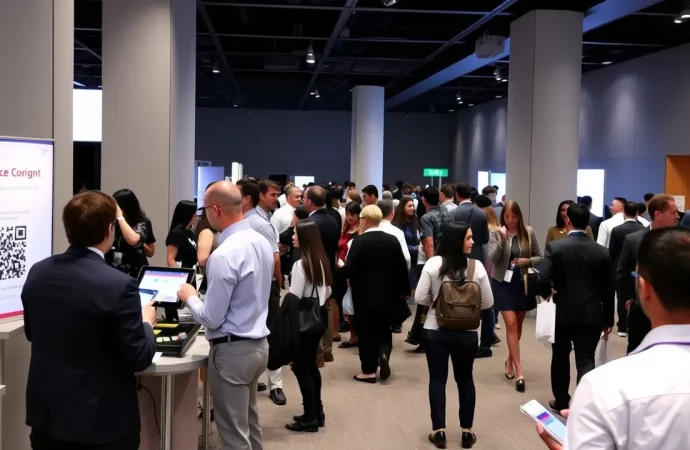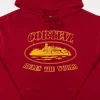Introduction The number of participants plays an important role in every event. But how can you determine the number of participants at your event? Based on the number of registered participants or by counting the number of participants who took part in the event? Well, to solve this problem, we have a solution for you.
Introduction
The number of participants plays an important role in every event. But how can you determine the number of participants at your event? Based on the number of registered participants or by counting the number of participants who took part in the event? Well, to solve this problem, we have a solution for you. In this blog, we’ve talked about how to track event attendance, so that you can easily keep a check on the total number of attendees at the event and measure the success. So let’s get started, but let’s first know:
Why Event Attendance Tracking Is Important?
Whether you are hosting a business conference, workshop, seminar, or music concert, tracking attendance is very important. It helps you understand how many people actually showed up, who they were, and whether your event planning was successful or not.
Event attendance tracking helps with:
- Knowing the actual number of attendees
- Understanding audience interest
- Planning food, seating, and giveaways
- Analyzing event success
- Improving future events
If you are running events regularly, then having a strong event attendance management system will save you time and make everything more organized.
Methods to Track Event Attendance
Let’s go through the best ways to track attendance at your event. Each of these methods is easy and commonly used.
1. Manual Check-In
This is the most basic way. At the entrance, you keep a list of all registered attendees. As they arrive, you tick their name off the list.
Pros:
- Simple to use
- No need for tech
Cons:
- Time-consuming
- Risk of errors
- Hard to manage large crowds at summits, conferences, and trade shows
Manual check-ins are suitable for very small events, like classroom sessions or meetings.
2. QR Code Scanning
This is one of the most popular event attendance tracking tips used today. When people register online, they receive a QR code via email. At the event, the QR code is scanned at the entry.
Pros:
- Fast check-in
- Reduces waiting time
- Easy to store and manage data
This method is great for medium to large-sized events.
3. RFID or NFC Badges
RFID (Radio Frequency Identification) or NFC (Near-Field Communication) badges are high-tech options. Each attendee wears a badge or wristband that automatically tracks their entry and exit.
Pros:
- Touchless and quick
- Tracks all attendee movement across the venue
- Helps with data collection and analysis
Cons:
- Expensive
- Needs technical setup
If you’re hosting large expos or conferences, this is an ideal event attendance management solution.
4. Event Apps
Many events now use mobile apps. These apps help attendees with schedules, maps, and networking. But they can also be used to track check-ins.
Pros:
- All-in-one platform
- Easy to update
- Good user experience
An event app can be a smart choice, especially if you also want to improve engagement.
5. Facial Recognition
This is the most advanced way to track attendance. Cameras scan faces and match them with the registration database.
Pros:
- Extremely fast
- Contactless entry option
- Accurate data, no chance of mistakes
Cons:
- Costly
- Privacy concerns
This is perfect for high-security events or tech-forward conferences.
Event Attendance Tracking Tips for Success
To make the most of your tracking methods, follow these simple event attendance tracking tips:
- Pre-register attendees online: Collect their basic info beforehand.
- Use technology: Go digital where possible. It saves time and reduces human error.
- Train your staff: Make sure your event team knows how to use the tools.
- Send reminders: A day before the event, remind your attendees via email or SMS to bring their QR code or badge.
- Have backup plans: Keep a manual list or extra devices in case of technical issues.
- Analyze your data: After the event, review the data. See how many people attended and when they arrived. This helps in future planning.
Choosing the Right Attendance Tracking Method
When asking how to track event attendance, the answer really depends on your event type and size.
- Small events: Manual or simple QR code check-ins work best.
- Medium events: Event apps or QR codes offer speed and convenience.
- Large events: RFID or facial recognition systems give you high-level control and data insights.
Pick a method that suits your budget, your audience, and your goals.
Post-Event Insights: What’s Next?
After your event ends, the job isn’t done yet. Use your event attendance tracking data to:
- Send thank-you emails to those who attended
- Ask for feedback through surveys, live polls, or yes/no questions.
- Compare expected vs actual attendance
- Plan better for your next event after knowing the results.
All of this helps in stronger event attendance management in the long run.
Conclusion
Effective event attendance tracking combines the right technology with clear processes. Whether you choose simple sign-in sheets, QR code scanning, RFID badges, or a mobile app, select methods that fit your event size and audience needs. Test systems, train staff, and plan backup options to ensure smooth check-in. Afterward, analyze the data to learn about session popularity, peak check-in times, and no-show rates. By following this guide, you’ll gain accurate, real-time insights that improve safety, sponsor value, and attendee satisfaction—paving the way for more successful events in the future.
Final Thoughts
We hope this simple event attendance tracking guide helped you understand the best ways to monitor attendees at your events. Remember, tracking attendance is more than just counting people. It’s about collecting useful data, improving the experience, and making your events smarter.
Whether you choose a manual method or high-tech tools, having a clear strategy for event attendance management will make a huge difference.
So next time you plan an event, don’t forget to ask: how to track event attendance? Use this guide and follow the tips to make it easy, accurate, and efficient!






















